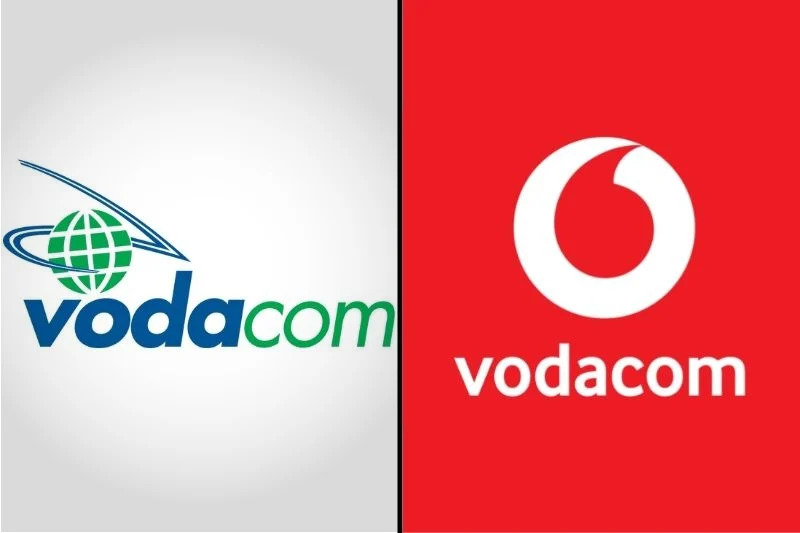In a world that never stops changing, brands face the constant challenge of staying relevant and resonant with their target audience.
Rebranding, the strategic overhaul of a brand’s identity, offers an opportunity for businesses to breathe new life into their image, align more closely with their evolving goals and market demands, and ultimately, secure a rejuvenated place in the hearts and minds of consumers.
However, the journey of rebranding is not just about changing a logo or updating a tagline; it’s about crafting a new narrative that communicates a brand’s renewed vision and promise in a way that captivates and engages.
This blog delves into the compelling reasons why brands embark on the transformative journey of rebranding, the meticulous process it entails, the hurdles that may surface along the way, and the remarkable benefits it harbours when executed with precision.
Why Brands Decide to Rebrand
In today’s ever-evolving market, a brand’s ability to stay current and relevant is crucial for its success. The reasons behind the decision to rebrand can vary widely, but they all circle back to the brand’s need to remain aligned with its core values, audience expectations, and competitive landscape. Let’s delve into some of the compelling reasons that drive brands towards rebranding, drawing insights from Inkbot Design.
- Adapting to Market Evolution: Consumer preferences and market trends are in constant flux. A brand that once resonated strongly with its audience might find itself struggling to maintain relevance as times change. Rebranding offers a way to realign the brand with current consumer expectations and trends.
- Staying Ahead of Competition: In competitive markets, differentiation is key. Brands often rebrand to stand out from their competitors, showcasing unique qualities or revamping their image to appeal more to their target audience.
- Reflecting Company Growth or Change: As companies evolve, expand their offerings, or pivot their business model, rebranding becomes essential to accurately reflect the new direction or expanded capabilities of the business.
- Modernising the Brand Image: With the digital age in full swing, having a modern and technologically adaptable image is more important than ever. Old logos, outdated websites, and stale brand messages do not resonate well with today’s tech-savvy consumers. Rebranding allows brands to modernise their image and stay technologically relevant.
- Improving Brand Cohesion: Sometimes, a brand’s message, visuals, and overall identity can become disjointed over time, especially with rapid growth or changes in direction. Rebranding helps in creating a cohesive brand image that accurately reflects the brand’s current values and goals.
- Global Expansion: Entering international markets might necessitate rebranding to ensure the brand resonates well across different cultures and languages. What works in one country may not work in another, requiring a reassessment and, potentially, a reimagination of the brand’s identity.
- Recovering from a Negative Image: Brands facing public relations crises or negative associations might find a fresh start through rebranding. By overhauling their image and messaging, companies can distance themselves from past controversies and rebuild their reputation.
By understanding and embracing these reasons, brands can make informed decisions about when and how to undertake the rebranding process. The goal is always to unveil a refreshed identity that speaks more accurately and compellingly to who they are today and where they are headed tomorrow.
The Rebranding Process: How to Rebrand
Understanding how to rebrand effectively is the pivotal first step towards ensuring a successful outcome. At its core, rebranding is an intricate journey that entails reshaping a company’s identity to spur growth and engagement. Gleaning insights from GfK’s vast expertise in brand intelligence, let’s delve into the rebranding process and how to navigate it effectively.
Rebranding is a comprehensive strategy that extends far beyond mere aesthetic changes. It encompasses a strategic approach to enhance and redefine how a brand is perceived, driving customer engagement and fueling future growth. Here are the critical steps involved in the transformative journey of rebranding:
- Brand Audit: Start with a thorough evaluation of your existing brand identity, messaging, and market perception. Understanding where your brand stands is crucial to identifying what needs to be revamped and which elements still hold significant value. Conducting research with your core consumers as well as competitor users will reveal current perceptions and highlight focus areas.
- Strategic Planning: Guided by the insights collected from the brand audit, your next step is to craft a clear strategic roadmap for the rebranding effort. This step involves setting clear objectives, defining your brand’s new personality, and outlining key messages that will be at the heart of your communication efforts.
- Visual Identity Design: A vital part of any rebranding process is developing a new visual identity, which can include changes to your logo, colour palette, typography, and overall design language. The visual elements should reflect your brand’s new direction and values, appealing to both current consumers and prospective ones.
- Messaging Refinement: Your brand’s messaging plays an integral role in communicating its unique value proposition. Use the rebranding process as an opportunity to refine and strengthen your brand messaging to ensure it effectively communicates your new brand philosophy and resonates consistently across all touchpoints.
- Employee Engagement: Remember, a rebrand isn’t just an external change. It requires internal alignment too. Ensure you have the buy-in of your employees and that they are engaged and informed throughout the rebranding process. Employees who understand and embrace the new brand identity can become powerful brand ambassadors.
- Customer Communication: Transparent and effective communication with customers is crucial. Develop a clear communication plan that keeps customers informed about the upcoming changes and the reasons behind your rebranding. Use different channels – emails, social media updates, website announcements, and more – to share your brand evolution story.
- Implementation and Rollout: Once you have your rebranding plan in place, the next step is the careful implementation of the new visual identity and messaging across all customer touchpoints. Coordinate with design agencies, printing companies, and web developers to ensure a smooth transition.
- Post-Rebranding Evaluation: After you’ve rolled out your rebrand, it’s important to measure its impact and effectiveness. Track key performance indicators like brand awareness, customer engagement, and market share to gauge the success of your rebranding efforts. Your findings can inform ongoing brand management and potential future refinements.
Rebranding endeavours can seem daunting but approaching them with systematic strategy, careful execution, and consistent communication can help ensure the transformation bolsters your brand’s engagement, growth, and future success.
Challenges in Rebranding
Rebranding is not without its challenges. Understanding these potential barriers and preparing for them can make the difference between a successful rebrand and one that falls short of expectations. Here are some of the key challenges businesses might face during the rebranding process:
- Maintaining Brand Equity: One of the biggest challenges is preserving the positive aspects of a brand’s existing equity while updating its identity. It requires a careful balance to ensure current customers feel the brand they know and love is evolving, not disappearing.
- Stakeholder Alignment: Ensuring all stakeholders, including employees, investors, and partners, are on the same page can be daunting. It’s essential to communicate the vision and rationale behind the rebrand effectively to gain their support and alignment.
- Customer Confusion: A significant change in brand identity can lead to confusion among customers, especially if the transition is not managed properly. Clear and consistent communication before, during, and after the rebranding process is crucial to minimising misunderstandings.
- Cost Implications: The financial cost of rebranding can be substantial. Beyond the immediate expenses of designing a new logo or marketing materials, there can be deeper financial implications if the rebrand doesn’t resonate with the target audience.
- Unforeseen Market Reactions: Predicting how the market will respond to a rebrand can be challenging. Negative public or market reactions can have lasting effects on brand perception and must be managed strategically.
Overcoming these challenges requires meticulous planning, transparency, and the flexibility to adapt strategies as needed. It’s about striking the perfect balance between the new and the familiar to ensure a smooth transition that strengthens the brand.
Best Practices for a Successful Rebrand
To navigate the complexities of rebranding successfully, adhering to certain best practices can significantly increase the odds of a favourable outcome. Here are essential guidelines to follow:
- Extensive Research and Planning: Before any change is made, conduct thorough research to understand market trends, customer expectations, and competitive positioning. This foundation will guide the strategic direction and ensure the rebrand meets market demands.
- Engage and Involve Stakeholders: From employees to customers, involve key stakeholders throughout the process. Their insights can provide valuable perspectives and their engagement can build internal and external excitement about the new brand.
- Transparent Communication: Be open and transparent about the reasons for the rebrand and the goals you hope to achieve. Clear communication helps to build trust and manage expectations throughout the process.
- Consistency Across All Touchpoints: Once the new brand identity is established, ensure it’s consistently applied across all channels and touchpoints. Consistency reinforces brand recognition and strengthens market position.
- Feedback Loop: Establish mechanisms to gather feedback from internal and external stakeholders. Listening to feedback and making adjustments as necessary can help fine-tune the rebrand and ensure it’s meeting its objectives.
- Continuous Monitoring and Adaptation: Rebranding is not a one-time event but a continuous process of adaptation. Monitor market reactions and brand performance closely and be prepared to make iterative changes to refine and improve the brand strategy.
Rebranding, when done correctly, can breathe new life into a brand, opening up new avenues for growth and engagement. By anticipating challenges and adhering to best practices, businesses can execute a strategic rebrand that not only respects the brand’s legacy but also propels it towards a brighter future.
Successful Rebranding Stories
From mobile networks to retail giants, numerous South African companies have effectively utilised rebranding to bolster their market presence, attract new customer bases, and seamlessly align with evolving market trends. Here are notable examples of successful rebranding efforts in South Africa:
Vodacom
In a bold move that reflected its partnership with Vodafone, Vodacom, one of South Africa’s leading mobile communications companies, rebranded to a vibrant red colour scheme in 2011. This rebranding was more than visual; it signified a strategic shift towards offering more innovative and customer-focused services. The transition to red not only made Vodacom visually distinct in the competitive telecommunications sector but also underscored its aim to improve connectivity and empower consumers through technology.
Cell C
Cell C, facing stiff competition and a rapidly changing telecommunications landscape, undertook a significant rebranding in 2017. By introducing a fresh, dynamic logo and brand identity, Cell C aimed to reposition itself as a customer-centric, competitive force within the industry. This rebranding effort underscored Cell C’s commitment to innovation and value for money, helping to revitalise its image and appeal to a broader demographic.
PayFast
PayFast, a leading force in South Africa’s e-commerce landscape, revealed its reimagined brand identity to represent its merger with PayGate and SID, strengthening its foothold under the larger Network International ecosystem. This rebrand signified a pivotal shift in strategy, not only unveiling a vibrant new logo and colour scheme but also underscoring the company’s expansion from primarily serving micro SME merchants to now accommodating larger enterprise clients. By harnessing the technological might of Network International, PayFast is poised to explore new payment rails and partnerships, aiming to simplify the payment process and decisively scale up its presence both locally and in the broader Southern African market.
FNB
In a recent strategic move, South Africa’s oldest bank, FNB, embarked on a major rebranding to be seen as a brand that extends beyond “just banking”. FNB unveiled a new logo in a bid to align with digital applications and their future roadmap for the company. This was more than just a visual overhaul, as the rebranding signalled to consumers and stakeholders a shift in the business operations.
Accompanying the new logo were various initiatives, including a refreshed FNB app, and website, and the promise of being a “formidable provider of advice-led financial and lifestyle services, underpinned by exponential help”. Despite some initial hiccups with the new app’s rating, this rebrand signifies FNB’s commitment to evolving with the market currents and prioritising innovation and customer expectations. With its identity reinvented, FNB is prepared to remain relevant in an ever-changing business environment.
Conclusion
The journey of rebranding, as illustrated by industry giants like Spur, Vodacom, Absa, Cell C, EDGARS, MTN, FNB, and PayFast, is a compelling testament to the transformative power of brand evolution in South Africa. These entities underscore the importance of strategic change in staying ahead of market trends and consumer expectations.
For organisations looking to navigate the complex process of rebranding, KLA offers expert market research and consumer insights that can guide businesses through successful brand transformations, ensuring that the new brand identity resonates with customers and aligns with the company’s vision for the future.





